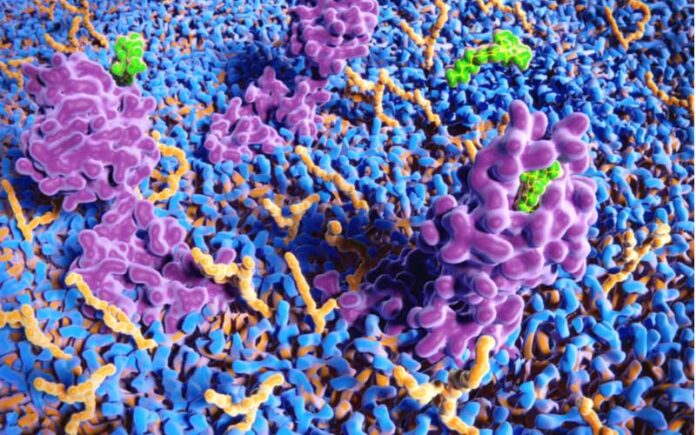Researchers have uncovered how marijuana plants produce pain-killing molecules that are 30 times stronger than aspirin — a property that gives them medicinal promise as a substitute for opioid pain relievers, which can lead to crippling addiction, researchers said.
“There’s clearly a need to develop alternatives for relief of acute and chronic pain that go beyond opioids,” said Tariq Akhtar, a University of Guelph biology professor and author of the study, in a statement on the newly released research.
Those pain-relieving molecules in cannabis, called cannflavin A and cannflavin B, cut down on pain by fighting off inflammation but are not psychoactive, in contrast with the chemicals that give marijuana its mind-bending effects, Canadian researchers said in a Tuesday news release on their findings. The study appears in the August edition of the journal Phytochemistry.
“Being able to offer a new pain relief option is exciting, and we are proud that our work has the potential to become a new tool in the pain relief arsenal,” said Steven Rothstein, another biology professor at the Ontario university who worked on the study.
Even though the molecules’ properties have been known for decades, it wasn’t until now that researchers actually mined the genome of a cannabis strain to determine just how the plant’s genes create those two so-called “flavanoid” molecules — both of them found in only trace amounts in the plants, researchers said.
“If you know what you’re looking for, one can bring genes to life, so to speak, and piece together how molecules like cannflavins A and B are assembled,” Akhtar said, describing the process as “a relatively straightforward exercise these days.”
The researchers said increasingly permissive attitudes toward cannabis — and legalization — are to thank for the research push, the Toronto Star reports
Opioids relieve pain by blocking pain signals in the brain, whereas a cannabis-based alternative relying on the cannflavin molecules would target inflammation itself, researchers said.
But creating a medicine isn’t without its obstacles.
“The problem with these molecules is they are present in cannabis at such low levels, it’s not feasible to try to engineer the cannabis plant to create more of these substances,” Rothstein said.
As writer Christine Sismondo put it in the Star, “you’d have to consume Cheech and/or Chong levels for it to work as an effective anti-inflammatory.”
But now that the gene processes that create the chemicals have been identified, Rothstein said they’re “working to develop a biological system to create these molecules, which would give us the opportunity to engineer large quantities.”
To that end, Guelph researchers have teamed up with Anahit International, a Toronto-based pharmaceutical company, to create “effective and safe anti-inflammatory medicines from cannabis phytochemicals,” the company’s chief operating officer, Darren Carrigan, said in a statement released by the school.
It’s not just opioids that a cannabis-based painkiller might have the edge over — a natural alternative could also have advantages over ibuprofen with its kidney risks, or acetaminophen with its associated liver problems, the Star reported.
“What’s interesting about the molecules in cannabis is that they actually stop inflammation at the source,” Akhtar said, according to the Star. “And most natural products don’t have the toxicity that’s associated with over-the-counter pain relief drugs, which, even though they’re very effective, do come with health risks. So, looking at natural products as an alternative is a very attractive model.”














